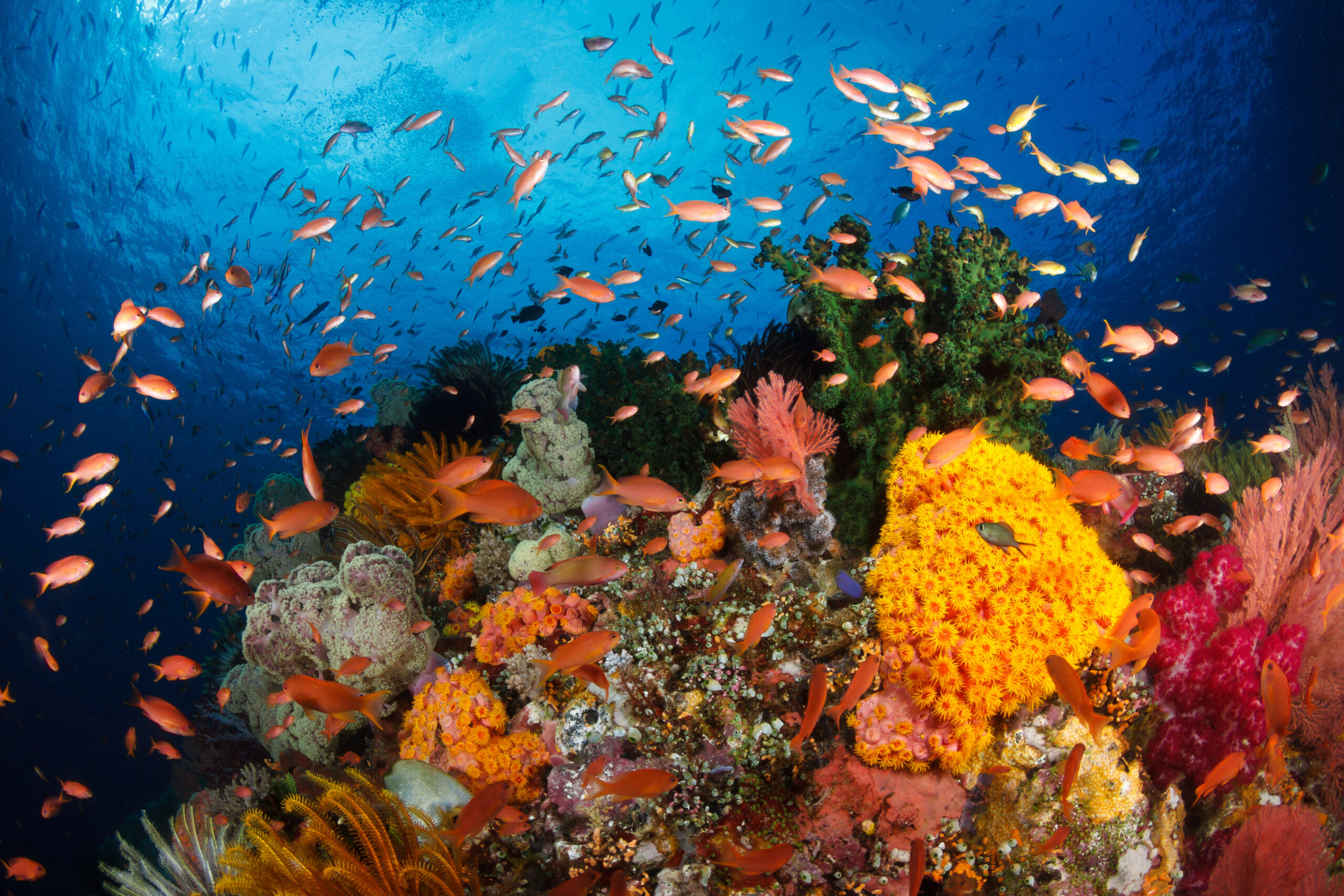Coral reefs are often associated with white sandy beaches, uniquely patterned fish, and brightly colored corals just below the water’s surface. We think of corals as the finishing touch to a tropical paradise full of crystal-clear ocean water. But did you know that coral reefs are some of the most complex ecosystems on the planet? The many different types of corals that exist can be found in both shallow, clear water as well as murky, deep, cool water and are responsible for supporting the life of millions of organisms and marine life. In fact, scientists estimate that there are millions of undiscovered species that could be the key to the development of revolutionary medications for everything from cancer and viruses to bacterial infections.
The Great Barrier Reef alone contains over 400 species of coral, 1,500 species of fish, and 4,000 different species of mollusks. The coral triangle, the most biodiverse coral reef on the planet, is home to 30% of the world’s reefs, 37% of the world’s coral reef fish, six of the seven marine turtle species, blue whales, sperm whales, 600 different species of corals, and more. In addition to their biodiversity, coral reefs provide an important layer of protection to coastal communities by absorbing the impact of the waves crashing on the coast, reducing the damage caused by storms.
Unfortunately, coral reefs are also highly delicate ecosystems. Human activities have proved detrimental to their survival. For example, without certain levels of grazing fish to keep algae from overgrowing, the corals are unable to obtain the nutrients needed to thrive in their environment, impacting their health significantly. This makes overfishing and using explosives to kill many fish at once extremely destructive to the reef, making it even more difficult for it to grow and thrive. Cruise ships, dredging, and land development similarly carve corals from the ground to make room for docks and alter the landscape. To complicate matters even more, the beauty of corals has become a popular aesthetic. Consequently, leading to their removal for aquariums, jewelry, and at times recreational misuse through touching and breaking during swimming and snorkeling.
It’s also important to remember that there are harmful activities we participate in daily far from the shore that make it extremely difficult for coral reefs to grow and thrive—primarily CO2 emissions from burning fossil fuels, deforestation, and plastic waste. As CO2 is released into the atmosphere, it cannot escape due to the greenhouse effect. The excess CO2 then causes excess heat, which is absorbed primarily by the world’s oceans. Corals are impacted because they have more difficulty creating new coral in this warmer environment. At the same time, the excess CO2 itself also gets absorbed into the planet’s oceans. This phenomenon leads to ocean acidification. Shell builders like oysters and corals rely on creating new skeletons and shells by combining calcium and carbonate from their environment. However, as the ocean’s acidity increases, it becomes nearly impossible for the shells and skeletons to form.
Communities worldwide rely on the biodiversity of coral reefs for food, tourism, and recreation. With an estimated 100 million dollar value, according to the National Marine Fisheries Service, U.S. fisheries from coral reefs are a significant source of income for people around the globe. They are an essential part of the economy and the ecosystem and should be protected at all costs.
For more information on energy and the impact of human activities on the environment, visit Resourcefulness.org, and don’t forget to follow us on Instagram and Facebook. If you really want to make a difference, discover amazing energy-related careers and activities through Smart Energy Education and Watt Watchers.


